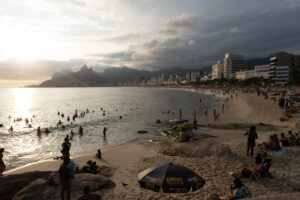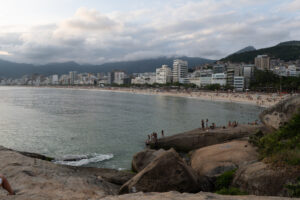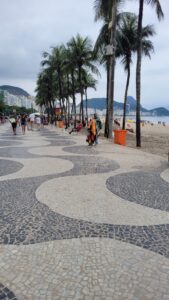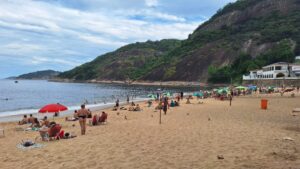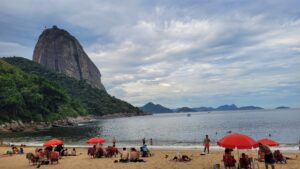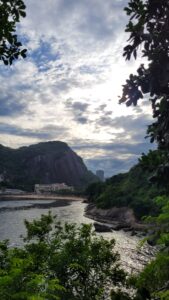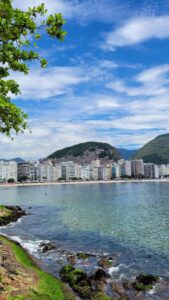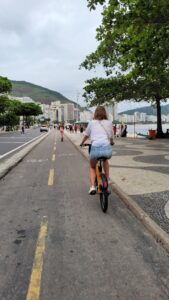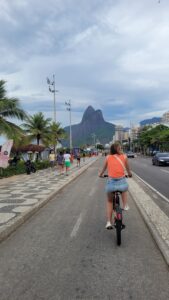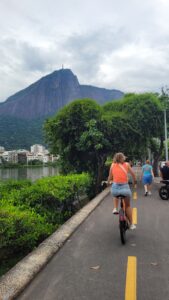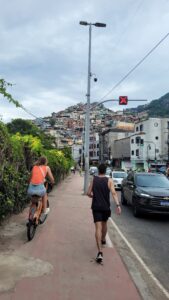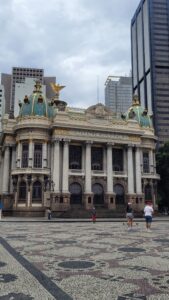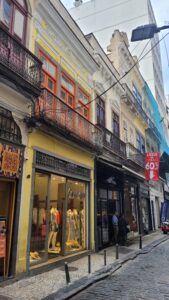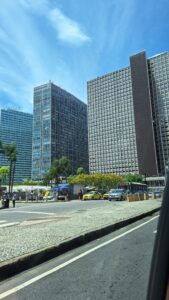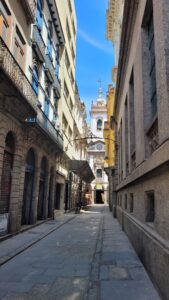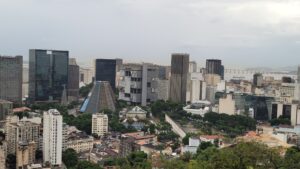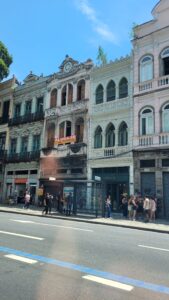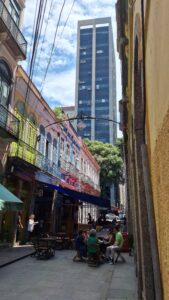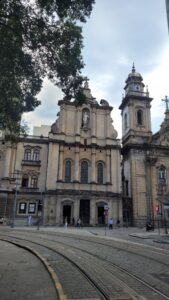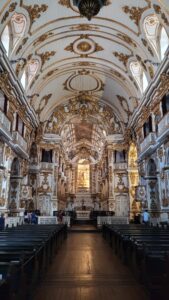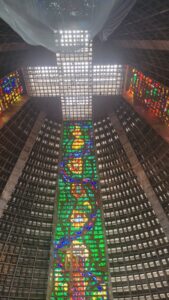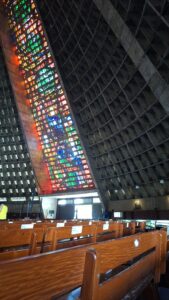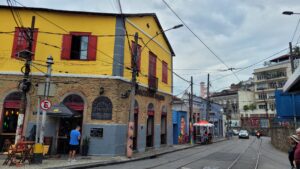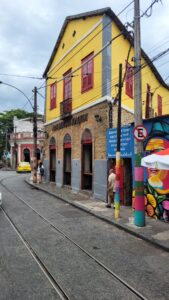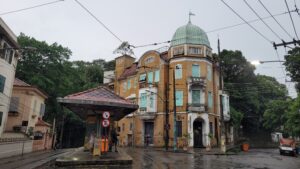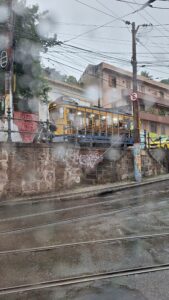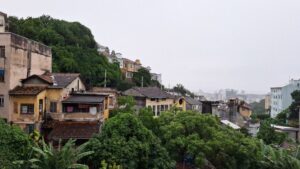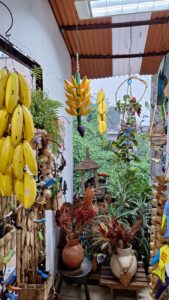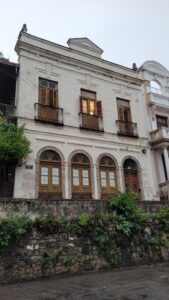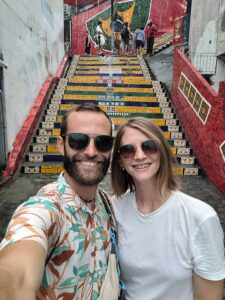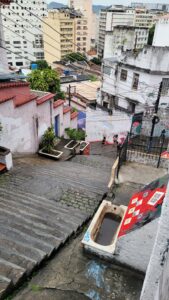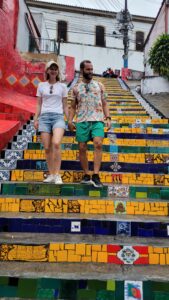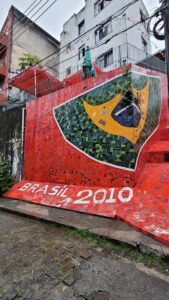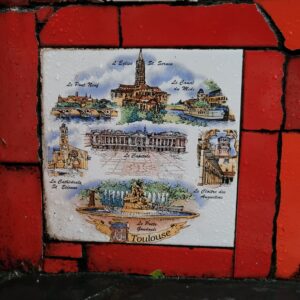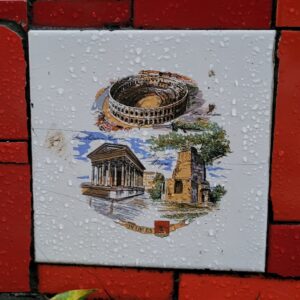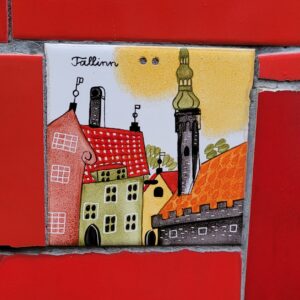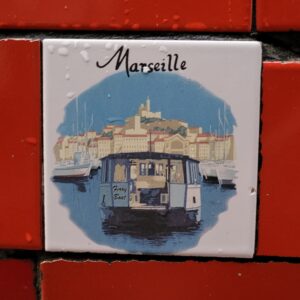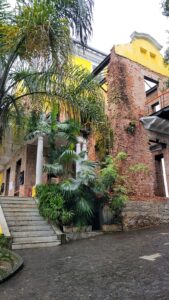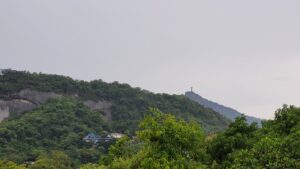rio is incredible
Rio and its beaches
What I really loved about Rio were the city beaches and the landscapes they offer. I’m a big fan of beaches set against skyscrapers, that blend between nature and the city. Among all the iconic beaches, my favorite was Ipanema, for the view of Dois Irmãos and because I found it calmer and more relaxed than Copacabana. Another beach that won me over, but that we didn’t get to spend much time at, was Praia Vermelha in the Urca neighborhood. With Sugarloaf Mountain towering above it and its orange-tinted sand contrasting with the surrounding greenery, it was absolutely stunning.
If you’re just looking at the view, Rio’s beaches are like something out of a postcard. But once you get in the water, reality hits. The ocean is far from pristine, the water is polluted, with floating plastic bags and bottles scattered around. Not so glamorous anymore... Another downside is the constant stream of street vendors on the beach, all selling more or less the same thing.
Biking in Rio
I was really surprised by how easy it was to bike around the city. There’s a dedicated bike lane running east to west through the Zona Sul. During our stay, the weather was cloudy and threatening rain, which at first was a bit disappointing, but in the end, it was for the best. Rio under the sun is hot, and we didn’t have to suffer through extreme heat. We were even able to do almost all our daytime trips on city bikes, something that would’ve been impossible under the scorching sun. And what a joy it was to bike along the coast! Following Kadu’s advice, we rode past Leblon, passed by the foot of Vidigal, and continued along the coastal bike path all the way to São Conrado, where paragliders and hang-gliders land after jumping from Pedra Bonita. Thanks, Kadu, it was totally worth it. The view from this bike path, suspended above the sea, was simply breathtaking. If we had more time, we would’ve gone all the way to Barra da Tijuca, but we wanted to explore Urca in the afternoon, so we turned back.
The must see in Rio
In Urca, there is a traditional gathering spot : locals gather on the low wall known as Mureta da Urca, facing the sea, to grab a beer and a bite to eat after work. Further along this same wall, at the entrance to the neighborhood, people also meet up at Pobreta da Urca, which is more than just a hangout spot, it’s a perfect place to catch an amazing sunset. Unfortunately for us, after 30 minutes, it started raining, and we had to take cover inside a nearby bar.
Rio and its neighborhoods
The Centro: A Changing District
When people think of Rio, they immediately picture its legendary beaches and golden sunsets from Arpoador. But Rio is more than that. It’s a dynamic city, a major economic hub where past and present intertwine.
The Centro, one of Rio’s oldest neighborhoods, was once the heart of the city’s economy. Over time, it transformed into a financial district with towering office buildings and ground-floor shops. But with the pandemic and the rise of remote work, many office buildings emptied out, and a lot of businesses had to close.
The city is trying to bring life back to the neighborhood, but in my opinion, unless people start living there again, the Centro will remain empty on weekends. That’s why it’s best to avoid wandering around there outside of working hours, you don’t want to find yourself alone in the wrong company. As we’ve mentioned before, in Rio, it’s always safer to stick to crowded areas.
On weekdays, though, it’s a different story. Behind the modern facades housing the headquarters of Petrobras and other Brazilian giants, the neighborhood has a fascinating historical and cultural heritage, with its museums and churches.
Nossa Senhora do Carmo: A Place Full of History
While exploring the Centro, we visited the church of Nossa Senhora do Carmo, an emblematic place steeped in history. It was once a key site for the Portuguese monarchy and imperial Brazil.
This is where King Dom João VI of Portugal was crowned, and where his son, Dom Pedro I, and grandson, Dom Pedro II, were crowned emperors of Brazil. It also hosted all royal weddings, including that of Princess Isabel, daughter of Dom Pedro II and a key figure in the abolition of slavery in Brazil in 1888. After visiting Lisbon, Olinda, and Recife, stepping into this church felt like diving deeper into Brazil’s colonial and imperial past.
A Striking Architectural Contrast
With the advent of the Republic, Nossa Senhora do Carmo became Rio’s Metropolitan Cathedral in 1900, only to lose that title in 1979 when the new São Sebastião Cathedral was inaugurated. And the contrast is shocking. The elegance and colonial charm of Nossa Senhora do Carmo stand in stark contrast to the brutalist architecture of the new cathedral—a massive concrete cone that, while architecturally interesting, felt completely soulless to me. There was no sense of history, no emotional weight. It just couldn’t compare to the solemn atmosphere of the old cathedral.
An Unexpected Stop at the National Library
As we wandered through the Centro, a sudden and intense storm hit. Looking for shelter, we ended up inside the National Library of Brazil, and what a surprise that was!
Among the countless books, I came across a massive collection of Voltaire’s works, right next to a whole section of Portuguese literature. No idea how they ended up there, unlike the rest of the collection.
This library is a relic of the past that tells a fascinating story on its own. It dates back to 1811, when the royal family of Portugal, fleeing Napoleon’s invasion of Lisbon, took refuge in Brazil. He brought the entire royal library collection with him, effectively transplanting a piece of European knowledge onto Brazilian soil. Today, it’s one of the largest libraries in the world.
This visit to the Centro was a reminder that Rio is a city of contrasts, between modernity and tradition, historical wealth and economic shifts. To truly understand it, you have to look beyond the beaches and dive into its history.
Santa Teresa: The Bohemian Soul of Rio
You can’t visit Rio without making a stop at its own version of Montmartre: Santa Teresa. Perched on the hills, this neighborhood has a unique charm, with its bohemian vibe, cobblestone streets, and colorful houses. Once a favorite of Rio’s elite, it was abandoned for a while before being rediscovered by artists. Today, it’s filled with art galleries, craft shops, and cozy cafés, offering incredible views over the city.
The best way to get there is by taking the bondinho, the iconic yellow tram that snakes its way up the hills, reminiscent of the ones in Lisbon.
The day we visited, it was pouring, not just a light tropical drizzle, but a full-on downpour. That definitely changed the vibe, and we couldn’t explore the area as much as we wanted. We checked out a few shops, but didn’t get to fully dive into the art galleries or local crafts. We’ll have to go back.
One upside, though, was that the Selarón Steps were practically empty. Normally packed with tourists, we had them all to ourselves, which is a rare treat. This massive staircase, with its 215 mosaic-covered steps, is the life’s work of Jorge Selarón. The tiles come from all over the world, either bought by him or donated. I had a great time searching for places familiar to me, I spotted Marseille, Toulouse, Nîmes, the Baltic capitals, and many more, though Helsinki was nowhere to be found.
For me, one of the highlights was the Parque das Ruínas. This place, once a grand villa that fell into ruin, was turned into a cultural center while keeping its original structure. From the top floor, we had an incredible panoramic view of Rio, the Guanabara Bay, downtown, and even Sugarloaf Mountain in the distance. With the misty rain, it had a mystical feel.
Even though the weather wasn’t ideal, Santa Teresa still showed us another side of Rio—more intimate, more artistic, and just as captivating.

